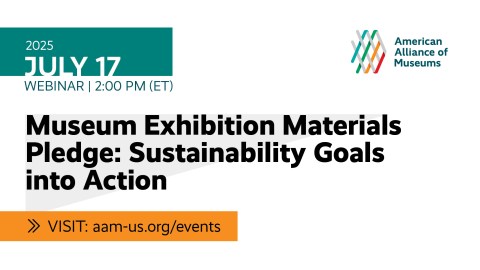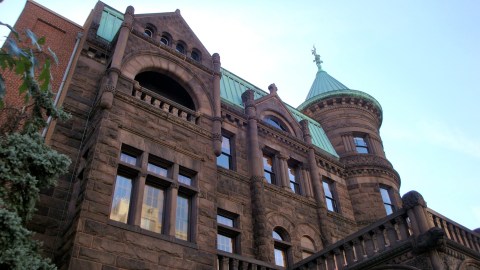My last posts on “Futurism 101” talked about the sneaky nature of change, and the constant need to scan for signs of change that is creeping up or waiting to spring upon us. This post introduces eras—patterns in time created by the interplay of these driving forces. For a compiled introduction to futures forecasting for museums, download “Tomorrow in the Golden State: Museums and the Future of California
Two types of change—incremental and disruptive—interact to weave the landscape of the future. Typically, any field of endeavor (medicine, for example, or transportation) is characterized by “eras” that start and end with transformative, innovative change. Within an era, people experiment with variations on the era’s dominant theme and change tends to be incremental. An era ends when the next great innovative leap leaves the last dominant innovation gasping in the dust.
Here’s an example of an era drawn from the field of medicine: Alexander Fleming launched the era of antibiotics in 1928. His discovery of penicillin ushered in a century in which drugs could effectively target bacterial infections. After a slow start the pace of discovering new drugs took off and now there are hundreds of antibiotics. Now the pace is tapering off as it becomes more and more difficult to find effective new antibiotics and bacteria become resistant to our old standbys. IMO, Watson, Crick and Franklin laid the groundwork for the next medical era, that of gene-based medicine, when they deduced the structure of DNA in 1953. Old eras don’t die, they just taper off and cease to be the dominant force in their field. We still depend on antibiotics, but we no longer pin our hopes on dramatic advances in health on these drugs—for that we look to breakthroughs in gene therapy and nano-technology guided by genetic targeting.
Futurists watch the interplay of incremental and disruptive change, trying to foresee how change will play out, and at what pace, within an era, and (more importantly) spotting the early signs of the slow petering out of one era, and disruptive change marking the beginning of a new era. This is particularly important because new eras usually call for new strategies, and radical disruption of existing plans.
As a budding museum futurist, I’ve been working on this question for awhile: what are the eras that define the museum field? Here is one possible nominee:
The Era of the Blockbuster Exhibit—late 20thcentury
“Treasures of Tutankhamen” debuted at the National Gallery of Art in November, 1976, eventually drawing 8.25 million visitors as it toured the country. “Tut” spawned a museum-going frenzy—in Riches, Rivals and Radicals, Marjorie Schwarzer writes of people queuing up all night for tickets to the exhibit, camping to get a spot, and fainting in line. The huge impact of “Tut”, cultural and financial, shaped exhibition planning in medium to large museums for decades to come. With time, the downside of reliance on blockbuster exhibits became clear. The pulses of income and visitation were addictive, but not necessarily sustainable, and a return to more conventional short-term, in-house exhibits could look like failure by comparison. Museums that used the income from blockbusters to expand or staff up needed ever larger and more popular exhibits to support swollen operating budgets. Now the blockbuster era is tailing off (if not yet quite moribund) further damaged by the increased costs of shipping and insurance and the logistics of international loans. Blockbuster exhibits are still with us, but they don’t define the landscape the way they once did. During this financial downturn, the trend is for museums to draw on their permanent collections, digging deep into storage to create high-quality, if not quite so glitzy, exhibitions.
I could really use your help creating the Geologic Chart of Museum Eras! Describe a time period you think constitutes a museum “era,” kicked off by a transformative innovation, which (if the era is over) petered out over time, superseded by the Next Big Thing. Post here, in comments, or email me at emerritt@aam-us.org. And yes, I will draw up the results in spiffy colors and post it to the Blog…
*and before some smart-alec paleontologist jumps all over this—yes I know these are periods, not eras. YOU try making geologic puns about museums.









What a great idea — examples leap to mind straight away.
Along with a couple of cautions.
You should probably specify that your eras apply to the US, because other places have other dynamics.
And I wonder whether different kinds of museums have different eras? Science museums, art museums, history museums, etc.
Here in Australia, blockbusters are still popular in art museums, and some history museums, but science museums haven't really gone in for them at all (except for dinosaurs).
What we do see beginning here is an era of large commercial exhibitions, e.g. Titanic, that are presented by a profit-making corporation rather than a museum.
Insurance concerns won't impact blockbusters here, because the Government indemnifies major blockbusters. I believe that it means no one pays a premium, but if disaster strikes, the Govt will cover the cost. Saves a LOT of money.
Here is a place to start: Alan Friedman just published "The Evolution of the Science Museum," an updating of a paper he published in The Informal Science Review (now The Informal Learning Review" in 1996. It can be obtained by going to http://www.physics today.org and clicking on October 2010 issue – "The evolution of the science museum."
I have been working, for quite a while now, on using the metaphors of biological evolution to organize the development of museums over the past 2000+ years. I have given several conference presentations that include this idea, which mostly works much of the time.
In 1976 Tut benefited from the same sort of indemnification as Australian exhibits, as it was literally "shipped" by the US Navy.
While this was an artifact-centered traveling blockbuster, a recent contrasting exhibit type is the one exemplified by the Lincoln Library Museum exhibit in springfield, IL. This non-traveling exhibit with blockbuster budget utilizes (among other illusions) what I call "reality exhibits" where the visitor may not be able to distinguish between a live actor and a media experience.
The real evolution over the decades, seen in other exhibits, is toward interpretive exhibits where the visitor may contribute their experiences to the content. One can only hope this trend of authentic reality will continue for a long time.